[ad_1]
![]()
A few weeks in the past, Leica introduced the Leica LUX digicam app, the legendary German firm’s first smartphone app for taking photographs. Whereas the corporate has produced its FOTOS app for a few years, that is its first devoted to smartphone images.
Leica LUX is a premium digicam app obtainable for iOS units geared toward photographers on the lookout for extra superior management over their photographs, together with some distinctive options you’ll solely discover from Leica. The app combines a smooth, user-friendly interface with novel options that, on the floor, ought to make it stand out in a crowded market.
So, the query then is, how does it stack up? Let’s discover out.
Observe: The entire photographs offered listed here are unedited, straight out of the app — although a number of are cropped in publish — with the corresponding preset famous for every.
Key Options
Handbook Controls
![]()
Like every of the most effective third-party apps, Leica LUX options a number of guide options, permitting customers extra management over their photographs than the inventory picture app gives.
There’s focus peaking, which highlights the in-focus areas of the body with a coloured overlay. Not like another third-party apps, you can not change the colour of the main target peaking, which is pink by default. Moreover, the app features a real-time histogram, offering a visible illustration of the publicity ranges within the scene. I do want there was an choice for an RGB histogram as a substitute of only a luminance histogram.
Publicity compensation, which you’ll be able to modify by swiping left and proper, sits on the backside of the viewfinder and is all the time prepared to make use of (which may be very beautiful). Swiping down on the backside of the picture space will deliver up white steadiness, ISO, shutter pace, and focus settings, which you’ll be able to lock at no matter settings you need (comparable to base ISO). The primary time you do that, the app will warn you that guide publicity controls are restricted by iOS to 12-megapixel captures.
![]()
That is attention-grabbing as a result of ProCamera, my typical app of selection, doesn’t have this limitation. Nonetheless, I checked Halide Mark II, and it does. It isn’t clear to me how or why ProCamera is ready to get round this (or why it’s a limitation to start with), however both manner, it’s not simply Leica’s app.
There are additionally choices for a rule of thirds grid, stage, flash (on/off/auto), and a self-timer. Fairly commonplace stuff.
Sadly, that’s about it. It’s easy and clear, however I’d hesitate to name a paucity of encompasses a perk. ProCamera, for instance, gives — along with these similar options — issues like a tiltmeter, eight facet ratios, focus and publicity lock, an intervalometer, TIFF help, 3/5/7 publicity bracketing, over and underexposure zebras, seize high quality settings, picture and video “zoom,” copyright EXIF information, the flexibility to edit photographs, and a plethora of customizable button and touchscreen choices, to call just a few. To not point out, ProCamera can shoot 4K 10-bit Dolby Imaginative and prescient video in each HEVC and ProRes HQ. Leica LUX doesn’t supply video in any respect.
Seize Codecs
![]()
Leica LUX helps RAW seize — each common DNG RAW recordsdata and Apple’s 10-bit computational ProRAW format. You can too choose between both JPEG or HEIF, and you’ve got the choice of recording each common RAW or ProRAW plus JPEG or HEIF recordsdata on the similar time. JPEG gives higher compatibility throughout units and packages, whereas HEIF is a 10-bit (as a substitute of JPEG’s 8-bit) format with extra environment friendly compression, yielding higher picture high quality and smaller file sizes. More often than not, I shot ProRAW + HEIF.
When taking pictures in Aperture mode, solely JPEG or HEIF can be found, the identical because the iPhone’s Portrait mode and all different third-party apps that I’ve used.
On the 15 Professional Max (and I assume the 15 Professional), it can save you recordsdata as both 12MP or 48MP; not like the native digicam app, there is no such thing as a 24MP choice. In Aperture mode, you might be restricted to 12MP (once more, the identical because the inventory iPhone app).
In Picture mode, you possibly can select between 13mm, 24mm, 48mm, and 120mm. There aren’t any 28mm or 35mm choices like the usual iPhone picture app gives. In Aperture mode, you possibly can select between 28mm, 35mm, 50mm, and 135mm (the latter choice is barely obtainable on the 15 Professional Max, leveraging its for much longer telephoto lens).
An choice I want to see included within the app is the flexibility to “save individually” when taking pictures each RAW/ProRAW and HEIF/JPEG. Personally, I favor for these to be separated within the picture library — you recognize which is which, and it makes sharing or Airdropping them to the pc simpler.
Aperture Mode

Certainly one of Leica LUX’s most touted options is its Aperture mode, which leverages the capabilities of dual-lens iPhones to create shallow depth-of-field results by way of depth mapping. It’s primarily the identical as Apple’s Portrait mode with one key distinction: you possibly can select from a number of Leica “lens” choices designed to imitate these lenses’ look.

These embody the Leica Summilux-M 28mm f/1.4, Summilux-M 35mm f/1.4 ASPH, Noctilux-M 50mm f/1.2, and (on the 15 Professional Max) the APO-Telyt-M 135mm f/3.4. As you’d count on, selecting any of those will crop the picture to mirror that focal size’s discipline of view, although all of them find yourself as 12MP recordsdata (even utilizing the telephoto lens, which implies some upsizing should occur behind the scenes). I’m stunned there is no such thing as a 75mm Noctilux/Summilux and/or 90mm Summilux choice for iPhones which have the shorter (77mm-equivalent) telephoto lens, particularly provided that there are way more fashions with that lens than the 15 Professional Max’s 120mm-equivalent. This looks like wasted potential.
Observe: After I wrote this, the app was up to date, and it made point out of a 90mm Thambar setting. This isn’t current on my 15 Professional Max, and it isn’t talked about within the press launch, however I’m assuming iPhones with the shorter telephoto lens do have a 90mm Thambar simulation.

The digicam’s Aperture Mode performs very well in most conditions, leaving me pleasantly stunned. It doesn’t all the time completely deal with fantastic, random particulars like hair, however neither does the iPhone digicam app. The 50mm Noctilux choice may even yield some barely swirly bokeh, which is definitely correct to that lens.
Leica Appears to be like
The opposite most marketed function of Leica LUX are the “Leica Appears to be like.” Based on Leica, the app “makes use of Leica shade science to supply a collection of shade gradations and movie presets that emulate these of Leica cameras.” I’m unsure what Leica means by emulating movie or its cameras — you possibly can’t emulate a movie digicam, in spite of everything, and Leica digital cameras’ shade and tonal response varies enormously throughout its fashions. Not one of the preset names point out what they’re emulating.
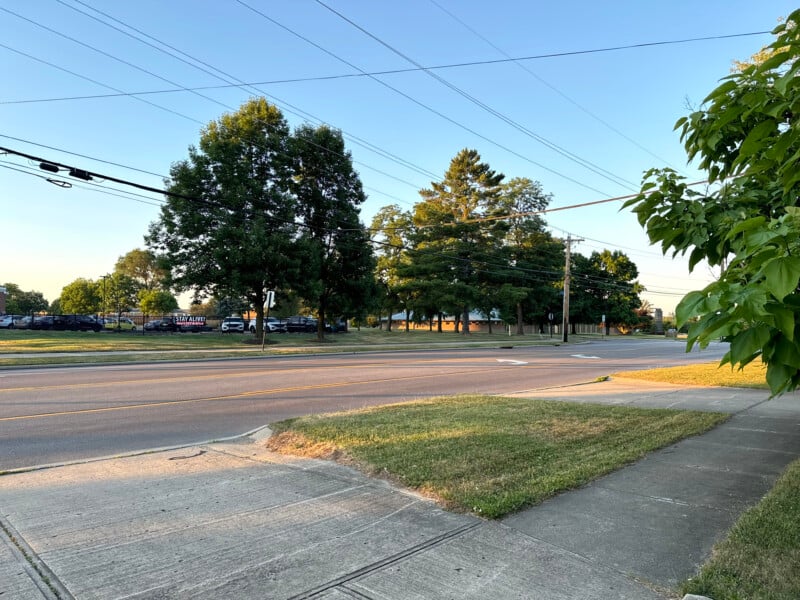
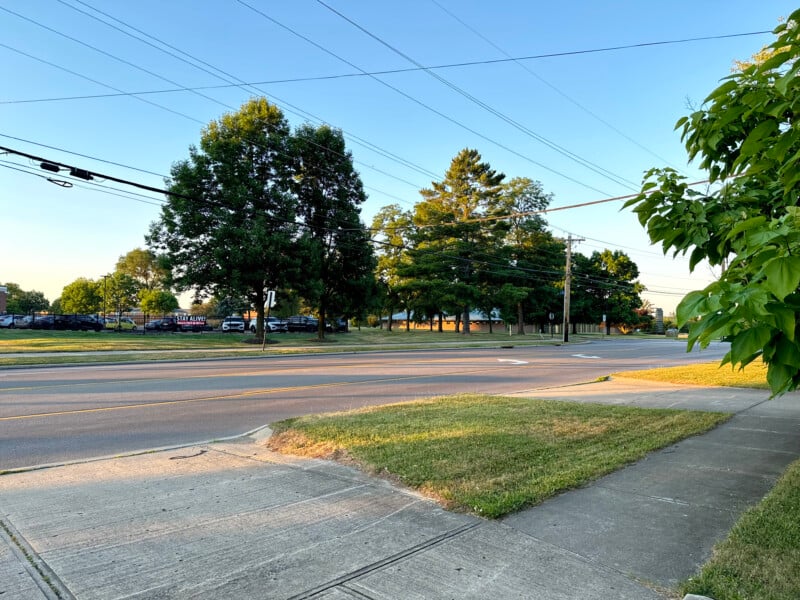
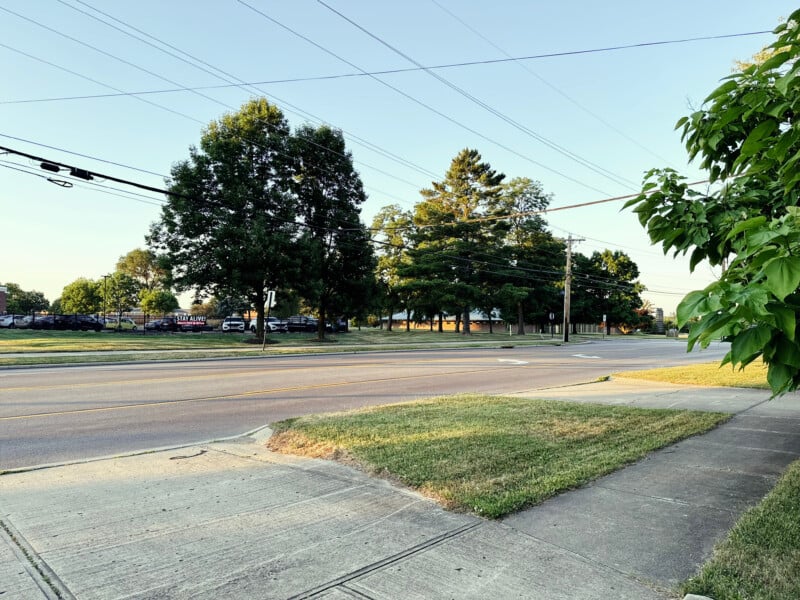
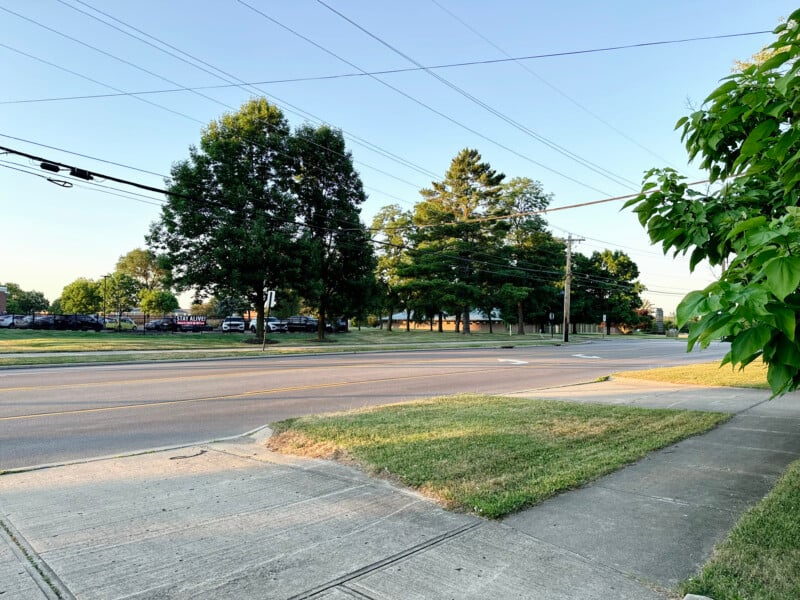
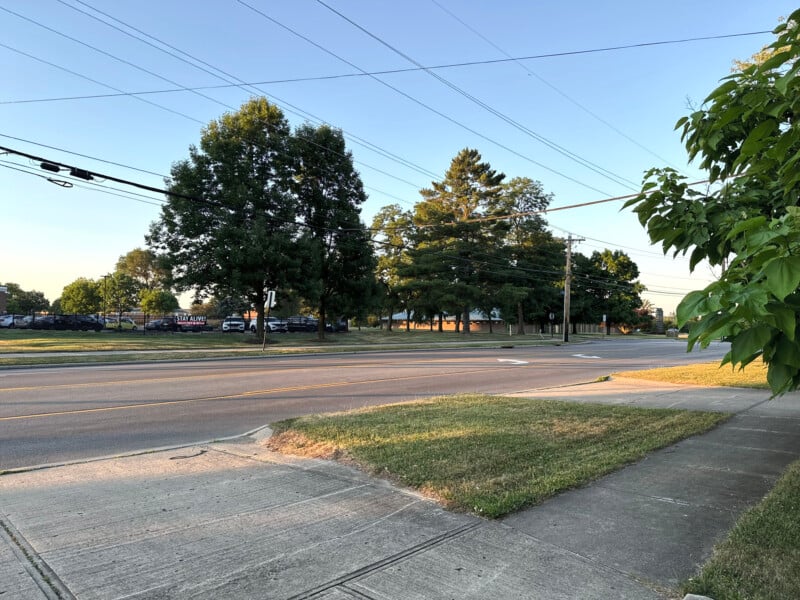

At any fee, I really actually like a number of the Leica Appears to be like. Leica Modern may be very good and doubtless my favourite, with nice however not overbearing distinction and saturation and mild transitions from midtones to three-quarter tones to highlights. It’s an amazing selection if you would like one thing that’s extraordinarily usable straight out of the gate. Leica Vivid is fairly good as effectively; not like some “vivid” profiles, it’s not extreme. Leica Pure is muted and refined, which makes for an amazing start line if you wish to edit the picture your self. Leica Everlasting is solely garish in most circumstances and simply the worst of all of them.
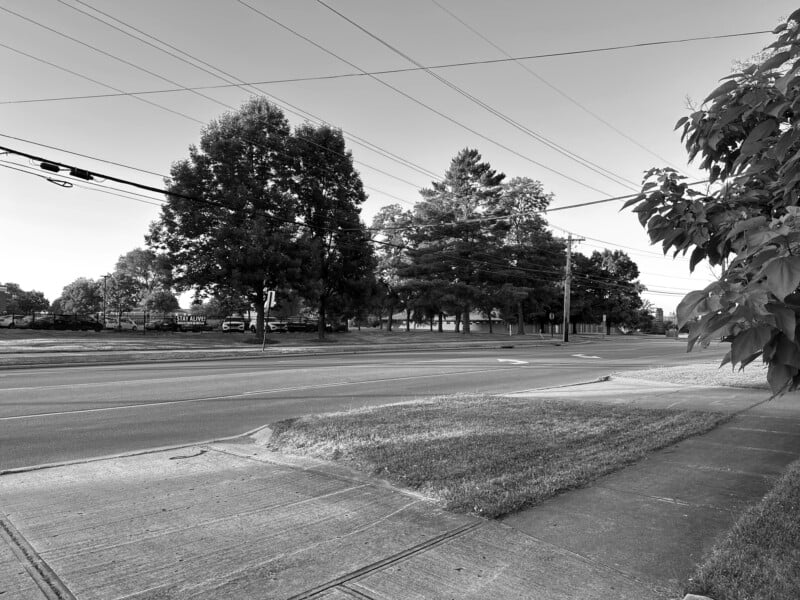
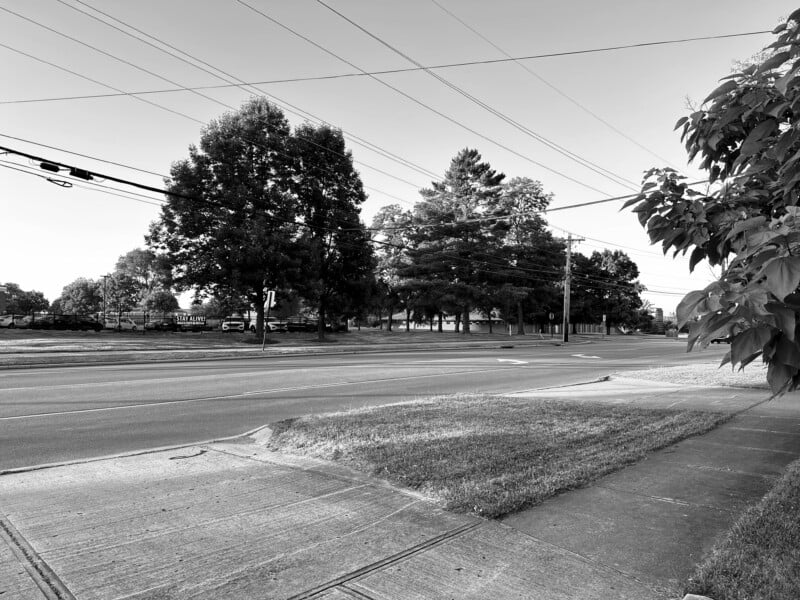
The 2 black-and-white modes are very effectively applied. Generally, the excessive distinction is just too heavy, however that’s to be anticipated, relying in your lighting. The Leica Blue is designed to imitate cyanotypes, whereas Selenium produces a refined brown tint just like selenium-toned black-and-white prints.
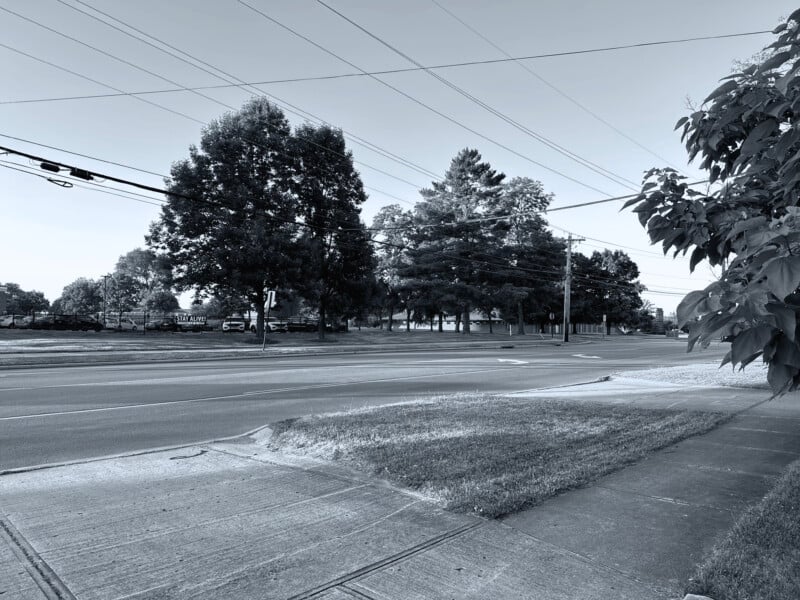
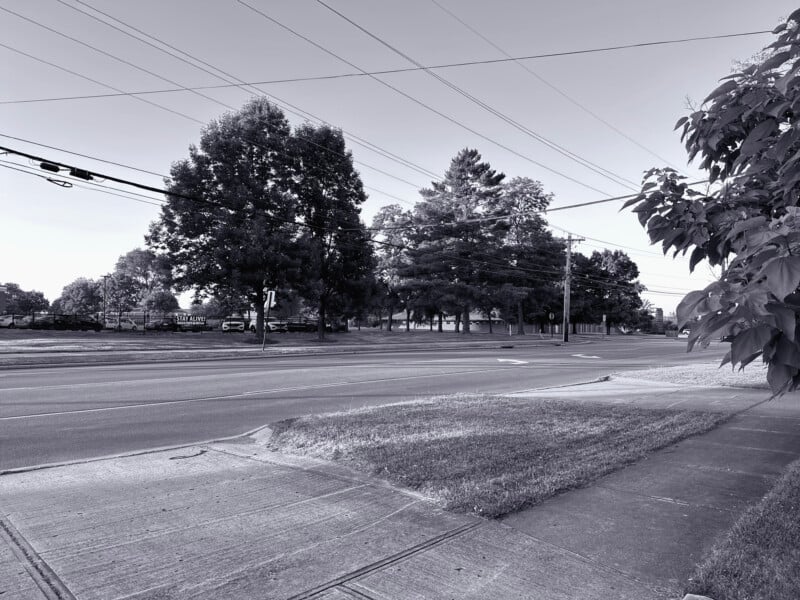
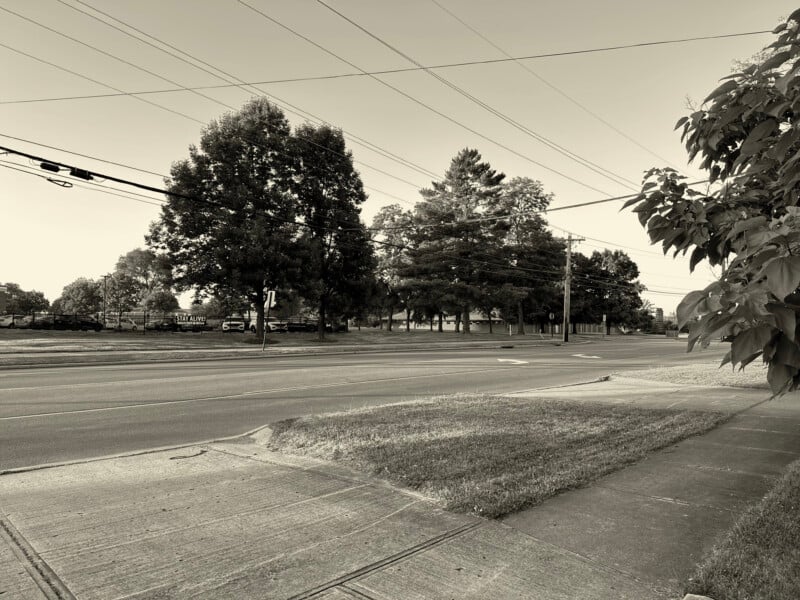
I do want you can fine-tune the profiles (e.g., scale back/enhance saturation or distinction) as you possibly can with an everyday digicam.
Usability
![]()
Leica LUX’s interface is designed with usability in thoughts, trying to steadiness superior performance with a clear, accessible format. It strikes a pleasant center floor between providing superior options and sustaining an intuitive interface that caters to each novice and skilled photographers. The app’s interface is minimalist and useful, using a gesture-based management system quite than leaning too button-heavy. I feel the app wants to vary from a swipe right down to a swipe as much as entry the guide publicity/focus controls. Swiping down will not be intuitive, and it makes it very straightforward to by chance change the publicity compensation.
One big challenge is that Leica LUX permits for virtually no customization. Not like apps comparable to Halide and ProCamera, customers can’t prepare the interface parts to swimsuit their particular person wants. For instance, when you regularly modify ISO or white steadiness and need these controls positioned in a extra accessible place on the display, you’re out of luck.
There are various issues which might be simply form of annoying in regards to the design/format and the truth that there’s no potential to customise it. For instance, switching between Picture and Aperture modes requires you to faucet the Mode button within the backside proper after which select both Picture or Aperture. There ought to simply be a devoted button to toggle between the modes (or make it an choice for one of many perform buttons).
And past that annoyance, to vary the seize format, it’s important to return into the menu, which requires manner an excessive amount of work — it is best to be capable to simply faucet the format icon within the prime proper, however that icon is solely informative, apparently. Two weeks into utilizing the app, I found that tapping the format icon within the prime proper really does cycle by way of the choices — it’s simply extremely unresponsive. I can faucet it fifteen instances in a row, and it does nothing. Toggling the grid on and off (within the prime left) has no such drawback. Maybe it’s a problem due to my display protector, however most different individuals may have display protectors as effectively.
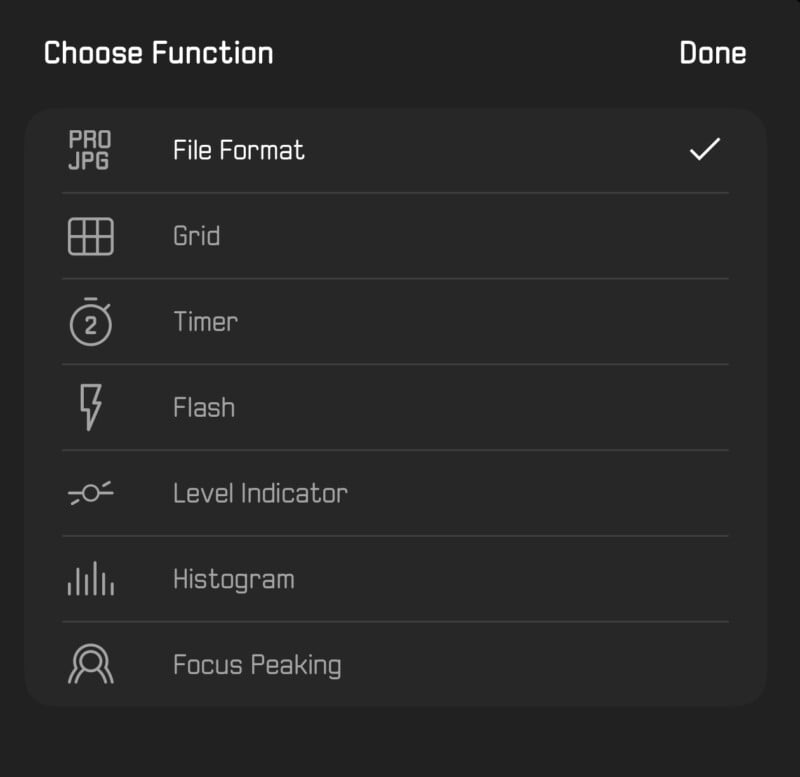
Nonetheless, you’ll be able to alter the three perform buttons (prime proper, prime left, and backside left slightly below the viewfinder) by long-pressing them, so I used to be in a position to remap the format icon to the underside left. It will be good in the event that they allowed you to select from extra choices to map to those icons, comparable to biking between Picture and Aperture mode.
Picture High quality
This gained’t be an actual in-depth evaluation of the iPhone’s lenses or a ton of A to B comparisons — the previous is a identified amount that many others have written about, and the latter is one thing that, effectively, I didn’t have a lot time for. Outcomes from Leica LUX don’t deviate a lot from the usual iPhone app in most conditions. And that’s not essentially a nasty factor.
HEIF or JPEG seize is just like what you get from the native app, nothing thrilling there. ProRAW can be on the identical taking part in discipline, and that’s a bit of disappointing. ProRAW is a superb format — or at the least it might be nice — as a result of it leverages the ability of computational images mixed with (most of) the flexibleness and latitude of RAW seize.
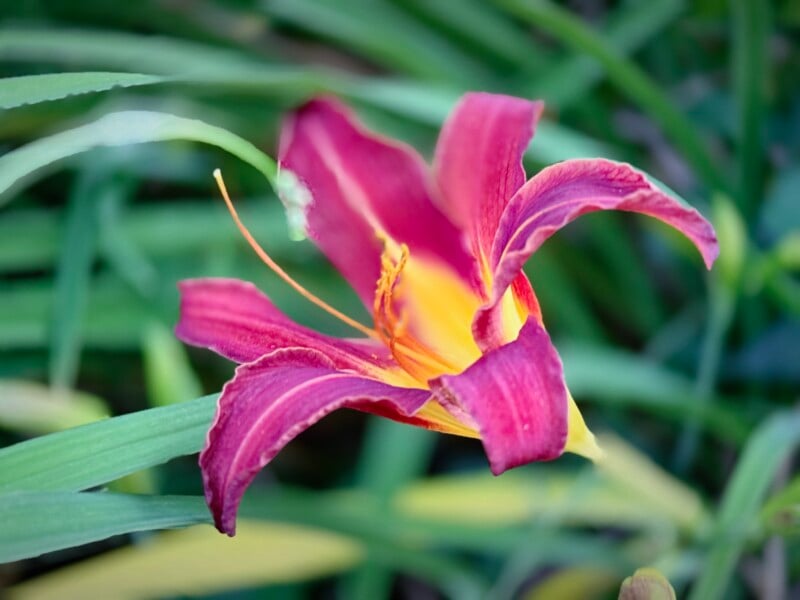
The issue with ProRAW (and this goes for Leica LUX in addition to the native digicam app) is that there’s too a lot happening — particularly, an excessive amount of noise discount and overly aggressive sharpening. As soon as these are baked in, there’s no pulling them again. Fortunately, nonetheless, ProRAW from Leica LUX appears to have much less saturation and distinction than the iPhone digicam app — it’s very straightforward to spice up saturation or distinction (an additive course of) however rather more troublesome to tug it again (a subtractive course of).
I need to be clear that the noise discount and sharpening aren’t solely an issue with Leica LUX; they’re an issue with nearly each third-party app in the marketplace, together with the native iPhone digicam app.
Now, perhaps there’s a purpose that every one these different apps additionally use aggressive tone-mapping, unnecessarily substantial noise discount, and extreme sharpening. I’m unsure what it might be or why we are able to’t have the dynamic vary and diminished noise benefits of computational images with out including all of that stuff on prime of it — perhaps it’s one thing in Apple’s ProRAW pipeline itself. However I used to be actually hoping that perhaps there would lastly be an app that solved this drawback. No such luck right here, sadly.
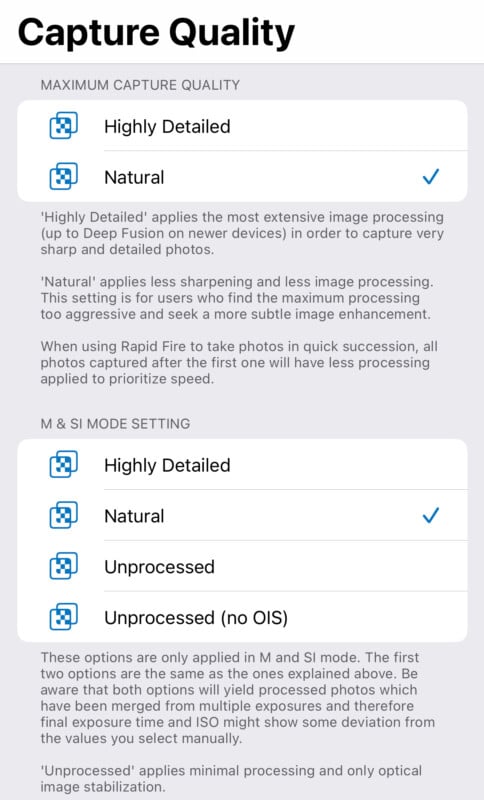
ProCamera does supply some settings like this, permitting you to decide on between “Extremely Detailed” and “Pure” (and “unprocessed” in different modes). Doing this considerably improves the ProRAW (and HEIF) outcomes, although they nonetheless aren’t on par with common RAW. Nonetheless, even when they aren’t pretty much as good as I’d like, it might be good to see Leica LUX supply comparable choices.
One other big challenge is that the app gives nothing just like the iPhone’s “evening mode.” The shutter pace bottoms out at 1/15 sec, at which level the app will jack the ISO up till it tops out at 12,800. This quite severely limits the app’s usability and picture high quality in lower-light environments. The iPhone’s evening mode is quite unbelievable — I’ve taken photographs of stars within the pitch blackness of Dying Valley at 10 seconds handheld that actually blew me away. ProCamera even gives an evening mode, as do quite a few different third-party apps (some are even devoted to it). So clearly, it’s potential, however you’ll discover no such functionality right here.
The Elephant within the Room: Pricing
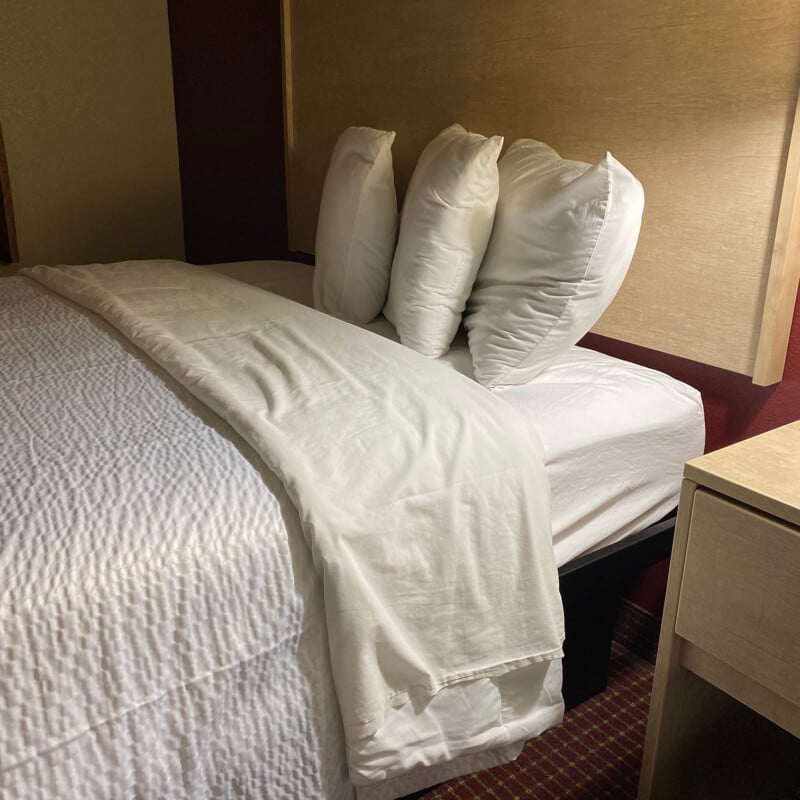
Let’s get this out of the best way: the Leica LUX app is pricey. It prices $6.99 per thirty days or $69.99 per yr, and no lifetime buy choice exists. Examine this to Halide Mark II — which prices $2.99 per thirty days, $11.99 per yr, or $59.99 for a perpetual subscription — or ProCamera — which is $14.99 for a lifetime subscription and both $11.99 per yr or $49.99 for lifetime when you improve to ProCamera Up. These are two of essentially the most superior, feature-rich, and sturdy digicam apps in the marketplace, and even the most costly model of them is $10 cheaper for a perpetual subscription than Leica LUX is for one yr.
Whereas there are issues to love about Leica LUX, each Halide and ProCamera have extra options and instruments and a extra customizable interface — at the least at present. Leica must deliver the pricing down significantly to stay aggressive and worthy of an trustworthy advice. I additionally suppose it needs to be free for anybody who purchases a brand new Leica digicam or lens. And maybe it can — in spite of everything, Leica initially charged individuals for its FOTOS app.
Are There Alternate options?

There are various, which I detailed in a previous article on the most effective iPhone digicam apps, and Jeremy Grey coated in his article on important images apps. The 2 greatest alternate options are the beforehand talked about Halide Mark II and ProCamera (or the extra superior ProCamera Up). Each are filled with nearly each function you can ask for (plus some), are extremely customizable, and are comparatively extraordinarily inexpensive.
Ought to You Purchase It?

No. Right now, it is vitally troublesome to suggest as a result of its premium pricing, lack of premium options, and quite a few points that should be addressed. Truthfully, proper now, it feels extra like a quasi-beta product than one prepared for prime time. Nonetheless, there’s a two-week free trial in the intervening time, so it could actually’t harm to test it out. Maybe you’ll love the Leica Appears to be like or lens simulations sufficient to justify shopping for it — each of these are very well-implemented. It’s the remainder that wants work.
It’s price noting that within the comparatively restricted time I’ve been utilizing the app, Leica has launched quite a few bug fixes and updates, responded positively to all of my suggestions, and even applied a number of of my options. If they’ll repair a number of the app’s most outstanding current shortcomings and produce the value down into the realm of purpose, then it is going to be price consideration.
[ad_2]
Matt Williams
2024-06-25 17:00:34
Source hyperlink:https://petapixel.com/2024/06/25/leica-lux-review-ambitious-app-not-yet-worthy-of-the-leica-name/

